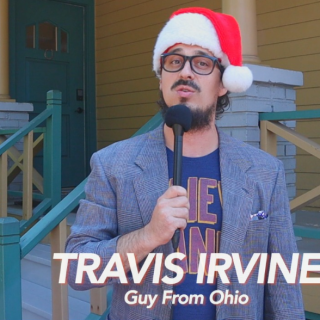Advertisement
Death by Democracy documents the death of a society governed of, by and for the people.
A local Ohio activist penned each chapter of Death by Democracy, recording how they “fought City Hall” to put a citizen’s initiative, ordinance or charter amendment on their municipality’s ballot. Each narrator tells a sincere and courageous story of a group endeavor to prevent or stop pollution from affecting their community.
The title of this book may seem overblown, sounding somewhat like “click-bait,” but there’s actually a valid reason “death” could result from the desecration of democracy experienced by these groups over the past decade in Ohio.
The book exposes how all Ohioans are at risk from devastating environmental safety and health issues and how regular people are stymied from trying to make the state a cleaner place to live. Many of the chapters focus on fracking – horizontal hydraulic fracturing to dig up oil and natural gas – that started around 2010 in Ohio. The book lists toxic pollutants resulting from fracking: formaldehyde, toluene, radon, hydrogen sulfide, benzene, nitric oxide, carbon monoxide, methane, carcinogenic trihalomthanes and “volatile organic compounds.” All are seeping into Ohio’s water, soil and air. Radioactive waste from fracking drill cuttings is spread on landfills, on icy roads and in outdoor toilets.
There is clear evidence that these toxins can kill plants, animals, people and entire ecosystems.
Other chapters portray people’s battles against pipelines and to protect aquifers and lakes. The book’s subtitle is “Protecting Water and Life: Frontline stories from Ohioans fighting corporate and state power.” The notion that water has become a commodity is examined. That the planet may endure wars over water in developing countries is widely known, but the facts in the book bring it home to how water systems are being affected in Ohio. Rather than a “necessity of life” water is considered property, like oil and gas.
Death by Democracy is not only a warning about Ohio’s toxic state, but is an indictment of public officials and governmental systems that disallow people’s ability to participate democratically in making, changing or enforcing laws.
Each chapter depicts how grassroots activist groups spent countless hours researching the offending energy industries and the pollutants; holding meetings and trainings; visiting elected officials and attorneys; and recruiting volunteers. They promoted their efforts, gained public support, gathered petition signatures, and followed required legal guidelines to “address their grievances” to government – only to be denied over and over and over again.
Those standing in the way of democracy include Ohio’s then-Secretary of State Jon Husted, county Boards of Elections, then-Attorney General (and current Governor) Mike DeWine, judges, state and local legislators, law enforcement officers and several newly-formed astroturf organizations with names like “County Advocates for Enterprise” and “Partnership for Ohio’s Future,” among others. Even environmental agencies such as the Ohio Department of Natural Resources and the Ohio Environmental Protection Agency sided with industry.
Grassroots groups heard city leaders give excuses like “our hands are tied.” Each story makes it obvious that energy industry corporations hold so much sway over state and local Ohio politicians that they are willing to autocratically change or invent new laws or policies so citizens are unable to exercise their rights.
Rights are what it is all about. The attempted initiatives and charter amendments are commonly entitled a “Community Bill of Rights” – providing people the right to clean air, water and soil. This concept appears to be very simple and common sense, but the stories in this book reveal how threatening “community rights” are to polluting corporations and the politicians that benefit from them. Other stories explore the rights of nature -- the right of ecosystems to flourish and evolve. This manifests as advocacy to create laws and policies that protect nature and the environment from pollution and destruction.
There is a growing awareness in our country that our democracy is an illusion. Elections no longer represent citizen preference with gerrymandered districts, voter suppression tactics, and money flowing through Political Action Committees tainting the results. But to discover on a local level that corruption of democratic process prevails may be eye-opening for some.
Other activist organizations know the game well. Local election integrity groups battle lies about voter fraud, draconian voter ID laws, physical intimidation at polling sites, fake voter rights groups and manipulation of ballots, to name just a few. A citizen-led signature drive to expand Columbus City Council confronted administrative challenges to their petition content, legal attacks on their petitioners, false allegations in the media, intentionally confusing ballot language, and public discrediting of the group’s leadership. The stories in Death by Democracy echo these types of unconscionably corrupt tactics and blatantly unethical obstacles put in place by elected officials.
The Community Environmental Legal Defense Fund (CELDF) published the book, as it was involved in the grassroots groups’ initiatives. CELDF assists communities advocating for democratic rights and rights of nature. They provide “low-cost legal services, grassroots organizing, and education support, to communities and governments facing injustice.”
Athens activists successfully placed one of the first initiatives on their ballot that passed with 78% of the vote in 2014. Their initiative for the City of Athens proposed “a public constitutional right to clean air and water, and established that those rights held prominence over the ‘rights’ of corporations.” Attempts to pass a similar charter for Athens County subsequently failed, because of format “technicalities.” The group’s continued efforts were protested by the Ohio Farm Bureau and the Ohio State Building & Construction Trades, among others.
Youngstown activists documented how fracking injection wells triggered 566 earthquakes in their county. One 2011 quake registered 3.9 magnitude and damaged homes, businesses and the Butler Institute of American Art. They repeatedly tried to pass Youngstown city laws, eight Community Bill of Rights initiatives and when one got on the ballot it lost by only 299 votes. Their enemies had threatened activists’ jobs and ramped up media lies, spending hundreds of thousands to fight against clean water, air and soil in the county. Eventually an indictment came down on the owner of the injection well that caused the earthquakes and several Youngstown city officials were jailed for “facilitating the illegal use of water utility funds,” but fracking in the area persists.
Many of the other groups’ initiatives in the book recount how they were consistently denied ballot access by their county Boards of Elections due to Ohio House Bill 463, a bill with provisions that allowed the Secretary of State and Boards of Elections to “determine, based on their opinion of content, that a proposed charter petition is invalid and not fit to be voted on.” The Columbus Community Bill of Rights’ third initiative effort in 2018 with 18,000 valid signatures was approved by Columbus City Council only to be squashed by the Franklin County Board of Elections. This frustrating impediment to citizens’ democratic participation is sadly upheld by both Republican and Democrat election board members.
In an uplifting turn of events in 2019, a success story emerged in Toledo, when 61% of voters approved a charter amendment giving rights to Lake Erie as an ecosystem. Their ballot access was made possible by a 2018 Ohio Supreme Court decision stating that “…boards of elections have no authority to review the substance of a proposed charter amendment….” The Lake Erie win was a monumental victory, the first of its kind in the country, although later overturned in a lawsuit.
The book could serve as a how-to manual on environmental advocacy, although the unfortunate outcomes of each story can be frustrating. The amount of detail about legal and administrative processes required for a grassroots group to fight the system is overwhelming.
The inspiring big picture in Death by Democracy is the dedication and perseverance of the activists. Despite continuing hurdles, arrests, lawsuits and harassment – they kept trying. Athens County’s Medina Miller put it best: “In activism there is no room for sissies or time for failure.”



